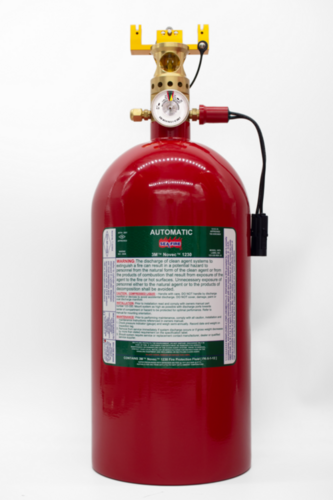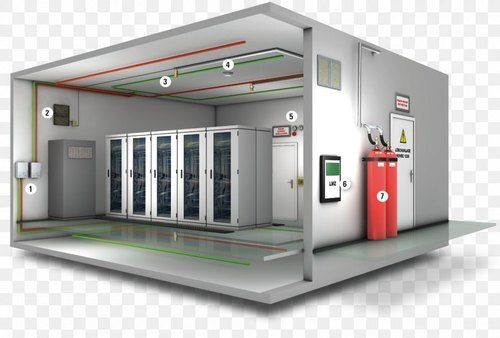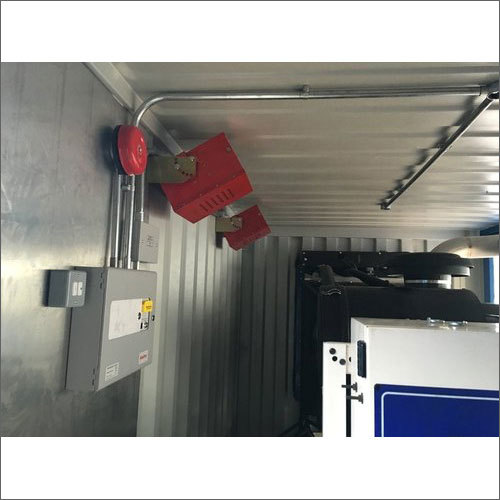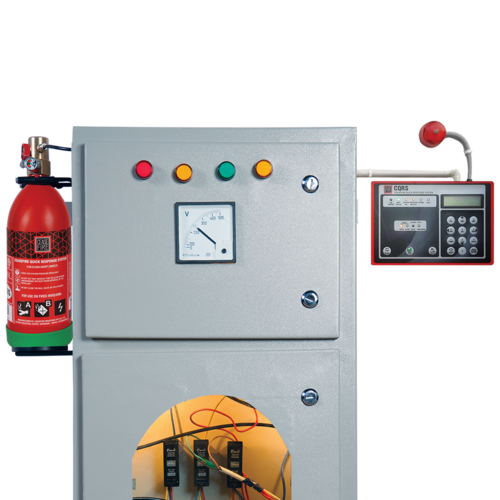- Home Page
- Company Profile
-
Our Products
- Fire Suppression Systems
- FK 5112 Suppression System
- Clean Agent Cylinderless System
- Clean Agent Cylinderless System for Car
- Wind Turbine Fire Detection and Suppression System
- Vehicle Fire Protection System
- Mild Steel Novec 1230 Fire Suppression System
- Fire Extinguishing System For Electrical Cabinets
- Aerosol Fire Suppression System
- Novec 1230 Flooding System
- Hfc 227ea Based Fire Suppression System
- Modular Clean Agent HFC236fa Extinguishers
- Aerosol Based Fire Suppression System
- FM200 Fire Suppression System
- Cylinder Less Tube Based Fire Detection Suppression Systems
- High Voltage Transformer Fire Suppression System
- Hfc227ea Clean Agent Fire Extinguishers
- Novec 1230 Clean Agent Suppression Systems
- Carbon Steel Fm 200 Fire Suppression System
- Direct Tube Based Fire Suppression System
- Novac 1230 Fire Flooding Systems
- Clean Agent Fire Suppression System
- Hfc 227ea Auto Fire Extinguishing System
- Car Fire Protection System
- Fire Suppression For Power Generators
- Hfc227ea Total Flooding System
- Dual Agent Retardant fire Suppression System
- Heat Sensing Tube
- Clean Agent Fire Suppression System for Wind Turbine
- Bus Engine Fire Protection System
- Fire Trace System
- Novec 1230 Fire Suppression System
- SEVO Tubing Suppression System
- Fire Detection And Fire Suppression System
- Heavy Vehicle Fire Suppression Systems
- Fire Sprinkler System Installation Service
- Vehicle Fire Suppression System
- Pre Engineered Fire Suppression System
- Server Rack Fire Suppression System
- Mild Steel Fire Suppression Systems
- Fire Suppression System (Capacitor Panel)
- Electrical Panel Detection Suppression System
- Fire Detection Tube Suppression System
- Fire Extinguishing System For Electrical Panel
- Electrical Panel Gas Suppression System
- Novec 1230 Fire Suppression System for Industrial
- Fm200 Gas Based Fire Suppression Systems
- FM200 Gas Based Fire Suppression Systems For Wind Turbines
- Tube Based Fire Suppression System
- Novec 1230 Fire Gas Suppression System For Electrical Panel
- Novec 1230 Fire Extinguishing System
- Novec 1230 Gas Suppression System For Wind Turbine Fire Suppression System
- Nitrogen Injection Transformer Fire Protection System
- Electrical Panel Fire Suppression System
- Dual Agent Retardant Fire Suppression System
- Diffusible FE36 Fire Suppression System
- Hazardous Cabinets Fire Suppression System
- Chemical Fire Suppression Systems
- Nitrogen NITFP System
- Automatic Fire Detection and Suppression System
- Novec 1230 Fire Suppression Systems
- Fire Suppression For Wind Turbines
- Bladder Tank Proportioning System
- Electrical Panel Fire Suppression
- Fk 5112 Fire Suppression System
- Fire Extinguishing Systems
- Fire Alarms And Detection Systems
- White Addressable Duct Detector
- UV IR Flame Detector
- Agni Sounder Hooter
- Addressable Fire Alarm System
- Fire Alarm System Amc Service
- Conventional Fire Alarm System
- Digital Addressable Fire Alarm System
- Aspirating Systems Smoke Detectors
- Agni Addressable Security Fire Alarm
- Fire Detection And Fire Alarm System
- Uv Ir Flame Detector System
- Ravel 2 zone Conventional Fire Alarm System
- Addressable Photoelectric Duct Detector
- Fire Alarm Sounder
- Fire Response Indicator
- Vesda Aspirating Smoke Detection System
- 4 Zone Addressable Fire Alarm System
- Ravel 4 zone Conventional Fire Alarm System
- Fire Detection Fire Alarm System
- Co2 Flooding/Suppression System
- High Pressure Co2 Automatic Fire Extinguishing System
- Co2 Gas Fire Suppression System
- CO2 Suppression System
- CO2 Fire Flooding
- ELECTRICAL PANEL CO2 FLOODING SYSTEM
- Automatic Pipeline Co2 Fire Suppression System
- Co2 Fire Flooding System
- Co2 Cylinder Fire Suppression System
- In Direct CO2 Flooding System
- Co2 Based Fire Suppression Systems
- Automatic Co2 Flooding System
- Automatic CO2 Flooding System
- Gas Based Co2 Flooding System
- Automatic Pipeline CO2 Fire Suppression System
- Co2 Fire Suppression System
- Passive Fire Protection
- Fire Extinguishers
- Twin Trolley Type Fire Extinguisher
- Co2 Fire Extinguisher Refilling Service
- Clean Agent Type Fire Extinguisher
- Amc For Fire Fighting System
- Co2 type fire Extinguisher
- Mild Steel Wet Chemical Fire Extinguisher
- Carbon Steel Abc Fire Extinguisher
- Automatic Ceiling Mounted D Type Fire Extinguisher
- Water Spray Sprinkler Systems
- Kanex Fire Extinguishers
- Fe36 Clean Agent Fire Extinguisher
- Modular Dry Chemical Powder Extinguishers
- Kitchen Fire Suppression System
- Kitchen Fire Suppression System
- Mild Steel Kitchen Fire Suppression
- Kitchen Hood Fire Suppression System
- Automatic Kitchen Fire Extinguishing System
- Kitchen Fire Extinguisher
- kitchen Nozzle Fire Suppression System
- Restaurant Kitchen Fire Suppression System
- Fire Suppression System For Commercial Kitchen
- Commercial Kitchen Fire Suppression System
- HW & MV Fire Protection System
- Commercial Gas Leak Detector
- Medium Velocity Water Spray System (MVWS)
- Transformer Fire Protection System
- Transformer Fire Prevention System
- Transformer Fire Suppression Systems
- Conveyor belt system fire protection system
- Nitrogen Injection Fire Protection System For Transformer
- High Velocity Water Spray System (HVWS)
- Fire Suppression Accessories
- Fire Hydrant System
- Clean Agent Gas Refilling
- Fire Fighting Foams
- Smoke Detector
- Ravel Beam Smoke Detector
- Addressable Photoelectric Smoke Detector
- Addressable Smoke Detector
- Fire Alarm Addressable Smoke Detector
- Battery Addressable Smoke Detector
- Polycarbonate Smoke Detector
- Agni Smoke Detector
- Conventional Optical Smoke Detectors
- Addressable Duct Smoke Detector
- Agni Wireless Smoke Detector
- White Polycarbonate Smoke Detector
- Manual Call Point
- Fire Retardant Fabric
- Fire Alarm Control Panel
- Heat Detector
- Beam Detectors
- Fire Door
- HW&MV Fire Protection
- Fire Cable Coating
- Fire Cable
- Public Address Systems
- Hydraulic Hose
- Fire Suppression Systems
- Contact Us

Novec 1230 Fire Extinguishing System
55000 INR/Set
Product Details:
X
Novec 1230 Fire Extinguishing System Price and Quantity
- 55000 INR/Set
- 10 Set
- 54000.00 - 55000.00 INR/Set
Novec 1230 Fire Extinguishing System Trade Information
- Cheque
- Asia
- All India
Product Description
A fire extinguishing system is a crucial component of fire protection in buildings, facilities, and industrial settings. Its primary purpose is to detect, control, and extinguish fires to prevent property damage, injury, and loss of life. There are various types of fire extinguishing systems designed to meet specific needs and conditions.
Here are some common types of fire extinguishing systems:
1. Fire Sprinkler System: Fire sprinkler systems are among the most common and effective fire suppression methods. They consist of a network of pipes, sprinkler heads, and a water supply. When a fire is detected, the sprinkler heads closest to the fire activate and release water to suppress the flames.
2. Clean Agent Fire Suppression System: Clean agent systems use environmentally friendly gases or chemicals to extinguish fires. These systems are typically used in environments where water could damage sensitive equipment, such as data centers, server rooms, or museums.
3. Carbon Dioxide (CO2) Fire Suppression System: CO2 systems are used in areas where fires need to be extinguished quickly and efficiently, like industrial spaces and flammable liquid storage areas. The rapid discharge of CO2 displaces oxygen, smothering the fire.
4. Foam Fire Suppression System: Foam systems are used for fires involving flammable liquids like oil and gasoline. The foam blankets the liquid, preventing the release of flammable vapors and suppressing the fire.
5. Dry Chemical Fire Suppression System: Dry chemical systems use dry powder extinguishing agents to suppress fires involving flammable liquids and electrical equipment. They are commonly found in commercial kitchens and industrial settings.
6. Water Mist Fire Suppression System: Water mist systems use a fine mist of water to suppress fires. They are suitable for various applications, including enclosed spaces, marine vessels, and certain industrial processes.
7. Pre-action Fire Sprinkler System: Pre-action systems are a variation of traditional sprinkler systems. They require two triggers to activate: a fire detection system alarm and the activation of a sprinkler head. These systems are used in areas where accidental water discharge could be problematic.
8. Inert Gas Fire Suppression System: Inert gases like argon or nitrogen are used in these systems to reduce the oxygen concentration in the protected area, effectively extinguishing the fire. They are used in environments where minimal damage to equipment is essential.
9. High-Expansion Foam System: High-expansion foam systems produce large volumes of foam to fill enclosed spaces rapidly. They are used in places like aircraft hangars and basements.
10. Water Deluge System: Deluge systems involve open nozzles that release a large amount of water when activated. They are used in hazardous environments like chemical storage facilities and oil refineries.
Fire extinguishing systems are designed to operate automatically in response to fire detection, and they can also be manually activated when necessary. Proper installation, maintenance, and testing of these systems are essential to ensure their effectiveness in fire emergencies. Fire codes and regulations often dictate the type of fire extinguishing system required for a specific location or industry to ensure safety and compliance.
Tell us about your requirement

Price:
Quantity
Select Unit
- 50
- 100
- 200
- 250
- 500
- 1000+
Additional detail
Mobile number
Email
Other Products in 'Fire Suppression Systems' category
" We mainly want inquiries from Gujarat, Rajasthan, Madhya Pradesh, Maharashtra, Goa. "







 English
English Spanish
Spanish French
French German
German Italian
Italian Chinese (Simplified)
Chinese (Simplified) Japanese
Japanese Korean
Korean Arabic
Arabic Portuguese
Portuguese